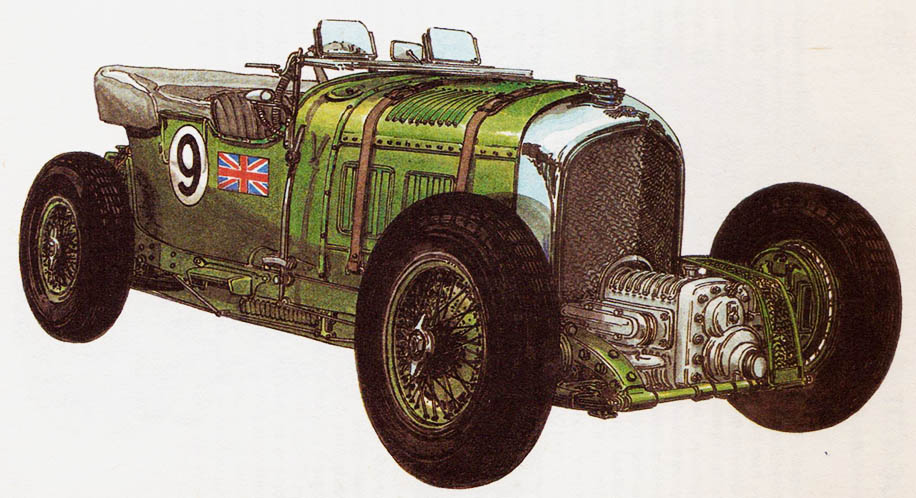BENTLEY 4,5 L – year 1930
Bentley Motors Ltd. Cricklewood, London, United Kingdom
Bentley cars present themselves quite remarkably in the history of Grand Prix racing. They are most often mentioned in connection with the competition at Le Mans, where they won many times over the years 1927-1930. However, the view prevails, that these cars were most successful at the ACF Grand Prix in Pau in 1930 year. Sir Henry Birkin's entry into the race for a Bentley four seater 4,5 And with the compressor, it was a manifestation of faith in the extraordinary capabilities of this car, more personal and sporty than racing.

Bentley Motors Ltd. Cricklewood, London, United Kingdom
On his way from England to the bathing town of Pau in the French Pyrenees, Sir Birkin removed the fenders, and later also headlamps and took the lead among competitors in this class, what bugatti, Delage, Peugeot i inni. The entire elite of European players, including Chiron, also participated, Count Czaykowski, Senechal, Sabia, Wimillim and other great racing drivers at the time. So the greater was the surprise caused by the appearance of Bentley at the finish line just behind the winner of” Etancelinem, driving on the Bugatti 35 B, especially, that Sir Henry Birkin had traveled the full length 395,875 km without stopping. The Bentley was equipped with a four-cylinder OHC engine with a cylinder diameter 100 mm and piston stroke 140 mm. The low-speed engine in series version with two carburetors achieved maximum power 92,0 kW (125 KM) already at 3500 RPM. Kompresor Roots, located in front of the radiator above the front axle and driven from the front end of the crankshaft, made it possible to achieve power 176,6 kW (240 KM) by 4200 RPM. The camshaft in the cylinder head was driven by a vertical shaft and opened 16 valves. Double spark ignition with two spark plugs in the cylinder head used two high-voltage magnetos as the energy source. The driving force was transferred to the rear bridge through the dry ones, single-plate clutch and four-speed gearbox. The rigid steel frame was suspended on longitudinal leaf springs with a steeper characteristic due to the passing of bends and the relatively high center of gravity of the car. The lever friction dampers were to take care of the depreciation. The car weighed approx 2000 kg and reached the top speed 210 km/h.